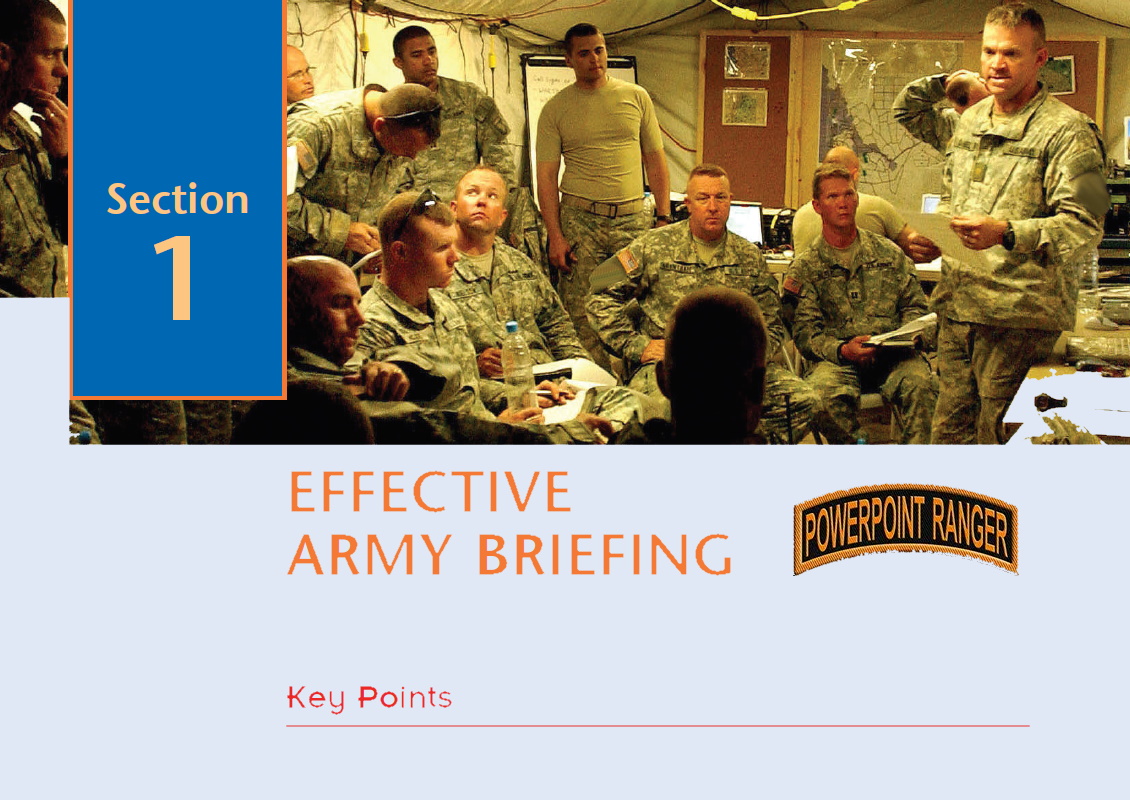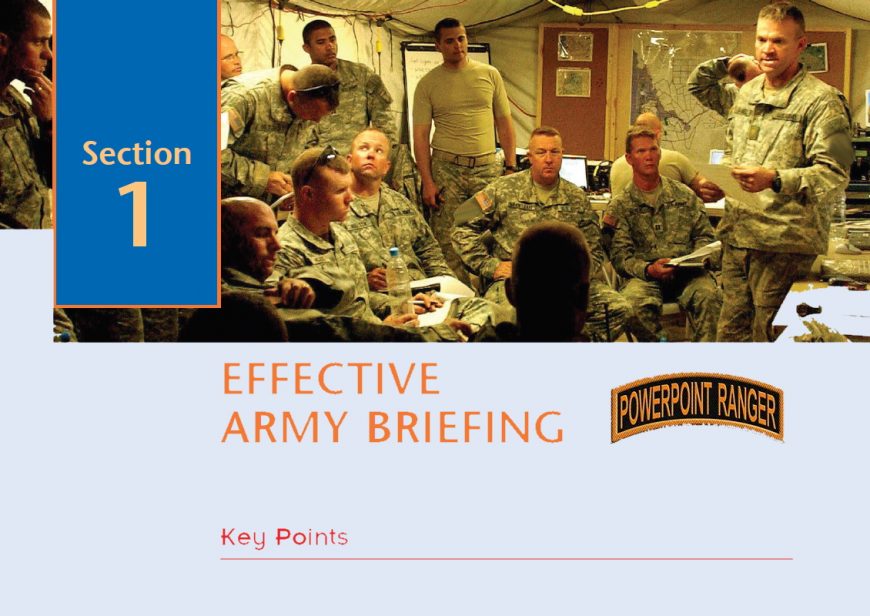EFFECTIVE ARMY BRIEFING GUIDE (FREE)
Briefings are the most efficient and common means to present information to
commanders, staffers, Soldiers, or other specified audiences. You conduct briefings
when your listeners need information quickly, when they can get together conveniently,
and when they need to decide how to act on that information. Briefings are often
preferred to written or even electronic communication because they are direct,
immediate, and interpersonal. When lives may be at stake and units must carry out
the right decisions, most decision makers prefer the immediate physical setting of
the military briefing.
While this lesson focuses on the development of briefing skills for leaders,
you must keep in mind that communication is a two-way process. The speaker has
a responsibility to clearly present the material, and this involves knowing the needs
and expectations of the audience. But the listener also has responsibilities—not only
to listen, but to provide feedback to the speaker to confirm that the message has
been received and understood. As you’ll learn in the next section, leaders not only
speak, they listen!
This section will briefly introduce you to the four basic types of Army briefings.
The most fundamental, the information briefing, aims to inform the listener and
gain his or her understanding. The second type, the decision briefing, aims to obtain
an answer or a decision. A commander or staff officer usually presents the third, the
mission briefing—typically in critical situations to reinforce decisions or orders and
to provide details and guidance necessary for the mission’s success. The fourth type
is the staff briefing, focused on ensuring a coordinated or unified effort among
commanders and staffers responsible for various aspects of a mission.
You must be able to decide which type of briefing and which techniques
to use depending on the situation, the briefing’s purpose, the response you want,
and your role and mission as briefer.
The ability to construct and deliver an effective briefing is a fundamental leadership
action. The immediate goal of building effective communication skills,
you will begin with the information briefing. The goal of military information briefings
is to enable sound decisions and problem-solving. Therefore, the information must be
current, accurate, clear, and credible. It must also meet the needs and expectations of
your audience. Your analysis of facts and opinions must be convincing and thorough.
The ability to deliver information clearly and confidently is as much a leader skill
as making a motivational speech to Soldiers who are about to depart on a dangerous
mission. One of the best ways to become an effective briefer is to study military leaders
who are noted for their ability to assess the needs of the audience, adapt the information and communication style, and present ideas clearly.
Four Steps of a Military Briefing.
collecting authoritative opinions and facts is part of which briefing preparation step
analyzing the audience to ascertain their anticipated reaction is part of which briefing step




